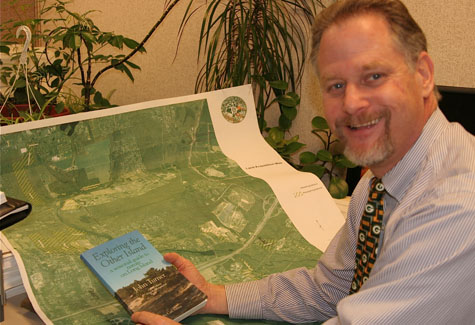A guide to exploring Long Island’s non-paved areas

As you go about your day, have you ever come across an unusual bird and wondered where it was heading? Would you rather spend a day off observing creatures in their natural habitat instead of rummaging store selves for bargains?
John Turner, co-founder of the Riverhead-based Long Island Pines Barrens Society and recently retired director of Brookhaven Town’s Division of Environmental Protection, has written a new book to guide those interested in exploring the non-paved areas of Long Island.
“It took me, literally, five minutes to come up with a list of 25 events and phenomenons that people could experience,” Mr. Turner said about his book, “Exploring the Other Island: A seasonal guide to nature on Long Island.” “The book, to me, is a window to the natural world of beauty, magic and wonder.”
We sat down with Mr. Turner this week to discuss his new book. The following was excerpted from our conversation:
Q: How long have you been an environmentalist?
A: Since I could first walk. My father loved clams on the half shell. Almost every weekend during the summer we would dig for them. He would also feed birds long before it became in vogue. We had a bird feeding station in our backyard in Smithtown. When I was 7 years old, I remember looking out our window during a heavy snow storm and all of a sudden I saw a flock of about 40 unusual mustard-yellow, bright-white and black birds. They were evening grosbeak birds. I remember being absolutely captivated and just suddenly realized I love birds. Once you start looking at birds you start to appreciate their interrelationships with other animals and the natural community of which they are a part of.
Q: How is your book different from other Long Island guide books?
A: It takes a seasonal approach. A lot of other guides just focus on a certain area, such as if you go to this park here’s what you’re likely to see. What I wanted to do is take advantage of people’s connection to the seasons. I thought it would be neat to present the nature on Long Island in a seasonal frame work.
Q: What are your top seasonal sight-seeing recommendations?
A: Summer is the best time to go whale watching. A fall phenomenon is hawk migration. If you go to the Fire Island Hawk Watch near the lighthouse, on some days, you’ll see a steady stream of hawks as they head southbound. Long Island is a migratory hotel for a lot of species. A great kid-friendly winter activity is having a black-capped chickadee eat right from your hand at the Morton National Wildlife Refuge in Noyac. In the spring is the American woodcock mating season. Once the male’s hormones start raging, they begin this strutting behavior and make a “peep peep peep” sound like a martian before shooting up to about 250 feet in the air. It’s incredible.
For more information, visit longislandnature.org.


